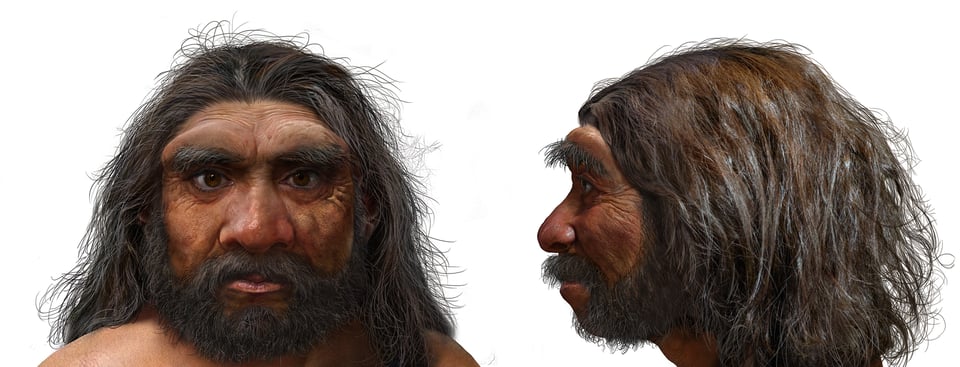

I’ve been lucky to have worked as a science writer for a number of years. If you file enough pieces, you can see how they fit together into a really big story. One of the most fascinating of the stories I’ve chronicled is about the Denisovans.
Fifteen years ago, I reported on some of the earliest findings about these mysterious people. DNA from a pinky bone and a tooth found in a cave in Siberia revealed that they came from a separate human lineage previously unknown to science.
Recognizing a whole lineage of people reaching back hundreds of thousands of years was pretty wild. Also wild: billions of living people carried Denisovan DNA, offering proof that modern humans interbred with Denisovans before they disappeared.
Every few years some new remarkable clue about Denisovans emerged. They thrived at high altitudes for tens of thousands of years on the Tibetan plateau. They may have reached as far east as New Guinea.
In 2021, I reported on the tantalizing possibility that scientists might have found the first Denisovan skull. They gave it the nickname Dragon Man, after the Dragon River in China where it had come to light. If it was a Denisovan, it would be a big improvement on the bits of teeth and bones found up till then. But at the time scientists were divided about Dragon Man’s true identity. What would seal the deal would be Denisovan DNA.
That DNA—plus some Denisovan protein tossed in for good measure—has now been discovered. Dragon Man is now the face of Denisovans—or at least one of their faces.
You can read about the latest chapter of Denisovan discovery in my recent story.
What will the next fifteen years bring? Better Denisovan DNA for one thing. As of now, scientists have only published a single high-quality Denisovan genome, which came from that pinky bone unveiled back in 2010. Other fossils contain only fragments of Denisovan DNA. Just one more genome would reveal a huge amount about the diversity of Denisovans.
More bones—perhaps even whole Denisovans skeletons—may also come to light. It’s possible that scientists have already found Denisovans, and they’re languishing now in museum drawers, waiting for their identity to be finally uncovered. After that, who knows? Maybe Denisovan cave art? I hope I’ll be around to file that story.
Baby Talk and Exploding Niches
Fossils are just one kind of evidence that scientists weave together to reconstruct the history of our species. Here’s a story I wrote about how baby talk may be a hallmark of our species—and may have helped our ancestors evolve full-blown language. And in another story, I report on the discovery that our species dramatically expanded its ecological niche in Africa 70,000 years ago. It may have been a crucial step towards our spread across the world.
The Future of Aging: Super Agers and More
The final three episodes of my podcast on aging are out!
Women live longer than men. And yet they experience what’s known as the sex frailty paradox: in their extra years of life, women face a greater risk of a host of chronic ailments. In this episode, I talk to scientists trying to solve this riddle by investigating hormones, chromosomes, and historical archives. (Apple, Spotify)
Episode Six is a conversation with Dr. Eric Topol, a cardiologist and director of the Scripps Research Translational Institute. He’s written an excellent new book called Super Agers, in which he surveys what science can tell us about what we can do right now to increase our odds of a healthy old age. (Apple, Spotify)
For the final episode of The Future Aging, I talk to a psychologist and an economist about the world we are entering, in which billions of people are gaining extra decades of lifespan. A lot of people look at it as a scary prospect. But if we rethink the nature of old age, it doesn’t have to be. (Apple, Spotify)
Air-Borne on podcasts and at Harvard
I spoke to BBC Radio 4 about AIR-BORNE (I show up at about 10:10). And here’s a longer conversation with the Spectator’s Book Club.
Last week I caught the train up to Boston, where I spoke to the Harvard School of Public Health. Here’s a story about the presentation. You can watch the conversation here:
Avoidable Death
As of today, the U.S. Agency for International Development is effectively no more. The Trump administration claimed they were hollowing out USAID in order to root out waste, fraud, and abuse. In reality, the medicine and food that USAID distributed around the world saved 91 million lives between 2001 and 2021 according to a study published Monday in the Lancet. Based on those figures, the authors of the study project that over the next five years, the wrecking of USAID will lead to 14 million deaths. That includes 4.5 million dead children.
As if that wasn’t enough death to grapple with, the Trump administration is making moves that could lead to more. Robert F. Kennedy has announced that the United States will withdraw its support for the leading international vaccination organization, known as Gavi.
Like USAID, Gavi has saved many lives with its vaccine program. It estimates that since 2001 it has averted 18.8 million deaths. If Gavi loses US support, its vaccines programs will likely shrink, and more children will suffer preventable diseases.
”This is utterly disastrous for children around the world and for public health,” said Dr. Atul Gawande, who led the Biden administration’s global health efforts.
If these actions go unreversed, future generations may look back at 2025 as a grim inflection point—when trends in improving global health reversed, and more people started dying again. A new pandemic will not be to blame. Just the choice of a few politicians.
Stay safe.
You just read issue #193 of Friday's Elk. You can also browse the full archives of this newsletter.